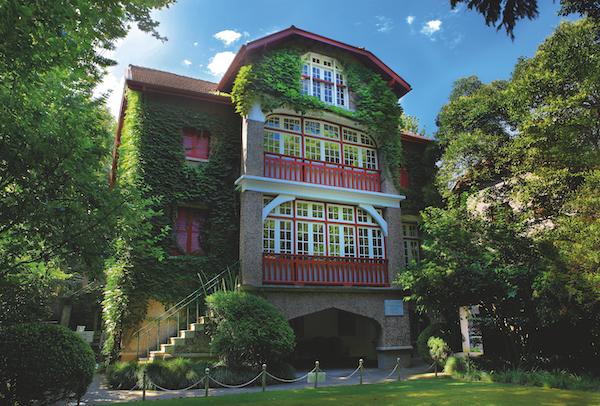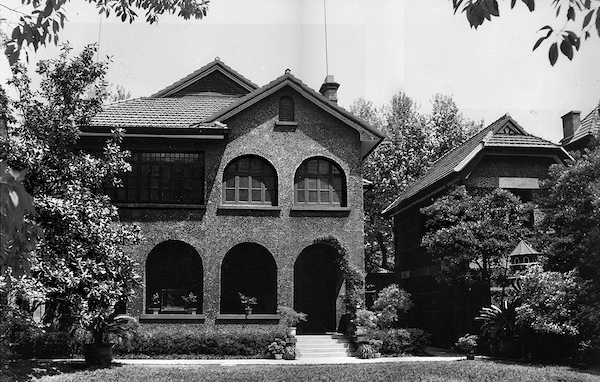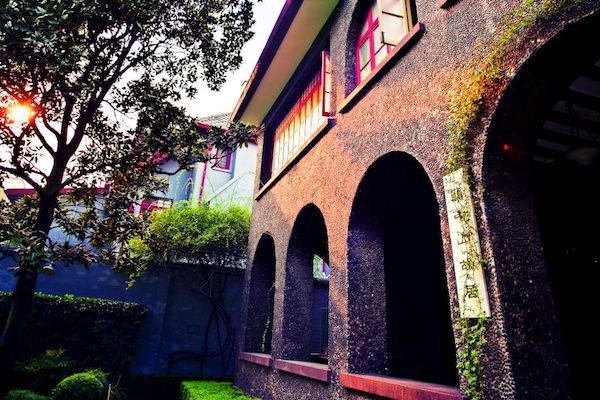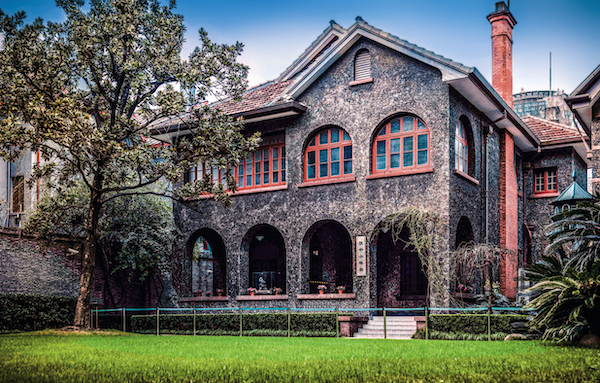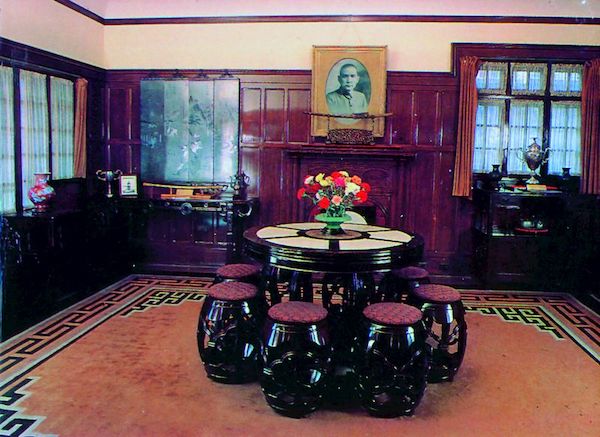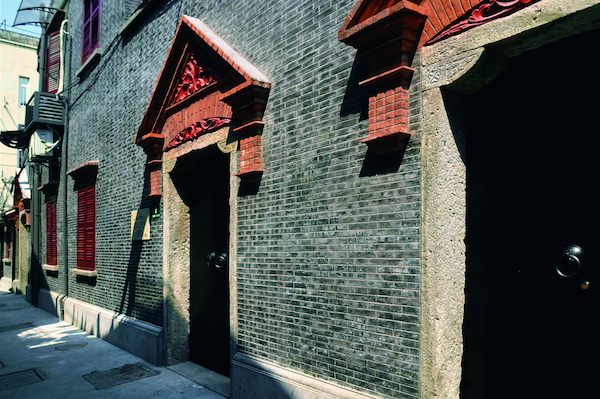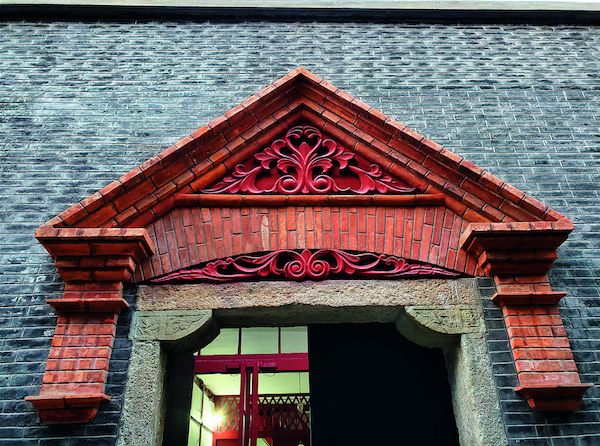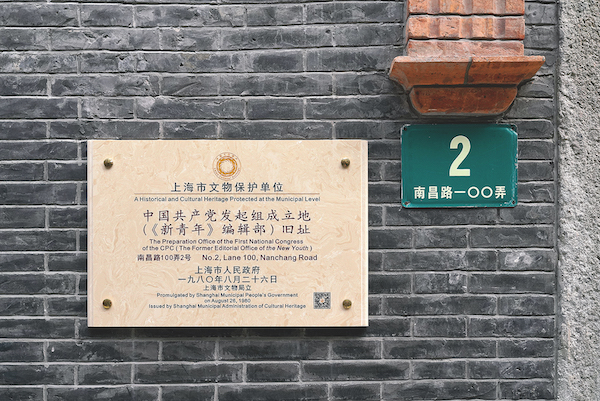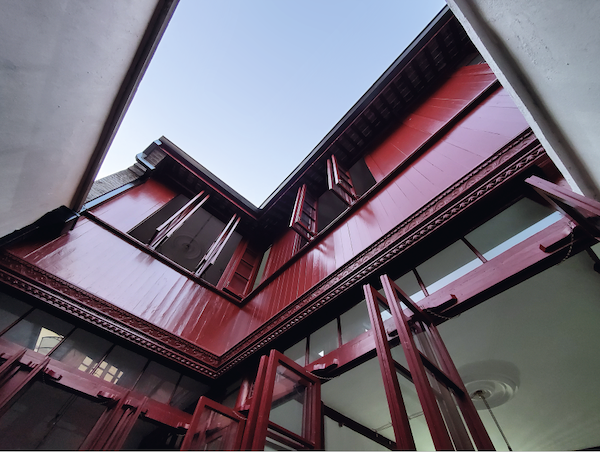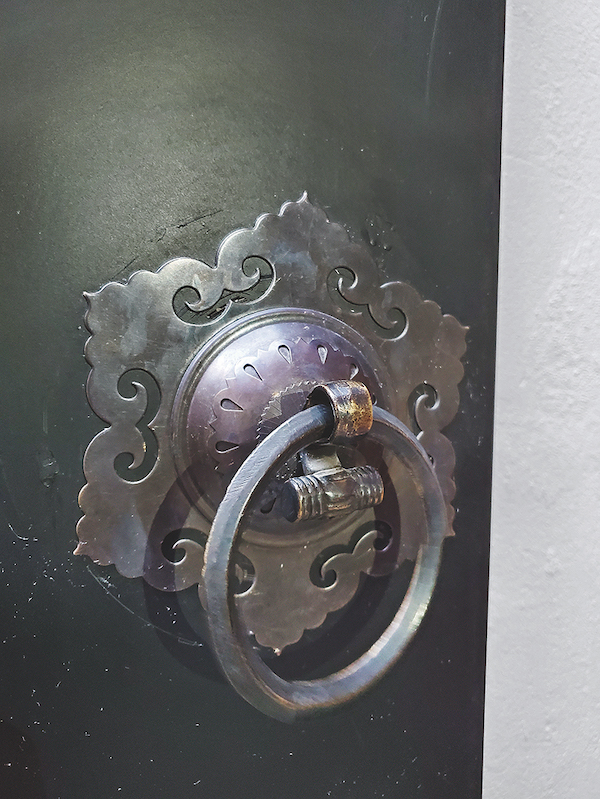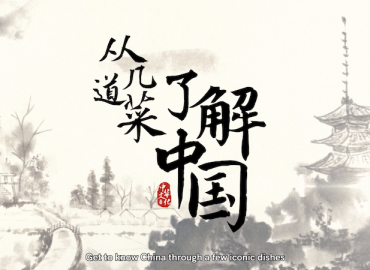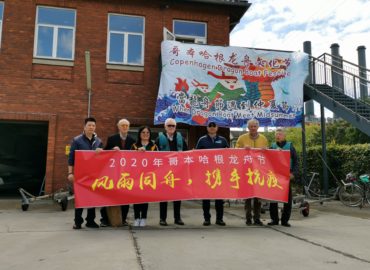Former Residence of Zhou Enlai
(73 Sinan Road, Huangpu District, Former Site of the CPC Delegation Office in Shanghai)
On Sinan Road in leafy shadows of plane trees, there is a small red-roof little house surrounded by bamboo fences and with its wall covered with Japanese Ivy known as “Residence of Zhou Enlai”. It is the former site of the CPC Delegation Office in Shanghai during the War of Liberation.
In 1959, No. 73 Sinan Road was announced as a Monument under the Protection of the Shanghai Municipality. In 1993, “Yipin Village” garden houses were announced as Heritage Architecture in Shanghai. Today, this area is known as “Sinan Mansions”.
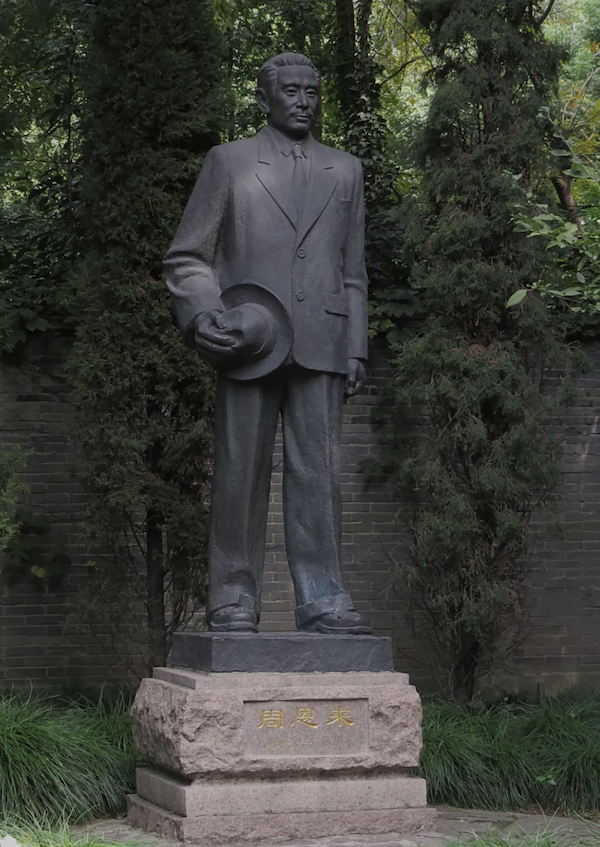
Former Residence of Dr. Sun Yat-sen in Shanghai
(7 Xiangshan Road, Huangpu District)
Approaching 7 Xiangshan Road, the first thing that comes into sight is the brass seated statue of Sun Yat-sen in front of the former residence, surrounded by vibrant magnolias, camphor trees as well as other flowers and plants. The statue of Dr. Sun Yat-sen has a resolute look and a serene demeanour, with the two bright eyes full of love and hope.
The Yat-sen was bought by the overseas Chinese living in Canada and given to Dr. Sun Yat-sen (1866-1925) as a gift.
Facing south, the building covers an area of 1,013 square meters, with a floor area of 452 square meters. The exterior walls are decorated with dark grey cobblestones, and the roof is covered with magenta heart-shaped tiles. Today, most of the furnishings in the former residence are original ones, and are arranged in the same way as they were in the 1920s and 1930s based on the memories of Soong Chingling (1893-1981).
Next to the former residence is Shanghai Museum of Sun Yat-sen, another European-style building which was officially opened in November 2006. The Museum has three floors and eight exhibition areas, displaying more than 300 pieces of relics, manuscripts and historical materials, showcasing the ever-lasting achievements made by Dr. Sun Yat-sen for the great rejuvenation of the Chinese nation.
Yuyang Lane
(2 Lane 100, Nanchang Road, Huangpu District)
In the spring of 1920, Chen Duxiu (1879-1942) came to Shanghai from Beijing, and soon moved to No. 2, Old Yuyang Lane, Route Vallon (now No.2, Lane 100, Nanchang Road), and “New Youth” which he edited, also moved here.
In June, Chen Duxiu, Li Hanjun (1890-1927) and others held a meeting here and decided to establish the early Communist organization in China. In August, after consulting Li Dazhao (1889-1927), the organization was named the “Communist Party”. Chen Duxiu served as the secretary. This was the Party’s initial organization which actively promoted the early Communist organization building across China by various means. No.6 New Yuyang Lane, Avenue Joffre (now No. 6, Lane 567, Middle Huaihai Road) became an important base for its work, and later became the location of the Central Commit-tee of the Chinese Socialist Youth League.
Today, No. 2, Old Yuyang Lane is officially named “The Preparation Office of the First National Congress of the CPC (the Former Editorial Office of La Jeunesse)”, and No. 6, New Yuyang Lane the memorial site of the Central Committee of the Socialist Youth League of China.
//DANISH
Zhou Enlais Tidligere Bopæl
(Sinan Vej 73, Huangpu-distriktet, KKPs Tidligere Delegationskontor i Shanghai)
På Sinan vej i platanernes skygger befinder sig et lille hus med rødt tag omgivet af bambushegn og dets væg dækket af japansk vedbend kendt som “Zhou Enlais bopæl”. Det var det tidligere sted for KKPs delegationskontor i Shanghai under frigørelseskrigen.
I 1959 blev Sinan vej nr. 73 bekendtgjort at være et monument under beskyttelse af Shanghai kommune. I 1993 blev havehuset “Yipin Cun” offentliggjort til at være en kulturarv i Shanghai. I dag er dette område kendt som “Sinan palæ”.
Sun Yat-sens Tidligere Bopæl i Shanghai
(Xiangshan Vej 7, Huangpu-distriktet)
Når man nærmer sig Xiangshan vej 7, er det første der kommer til syne, den messing siddende statue af Sun Yat-sen foran hans tidligere bopæl, som er omgivet af livlige magnolier, kamfertræer samt andre blomster og planter. Statuen af Sun Yat-sen har et bestemt udseende og et fredfyldt udtryk med to klare øjne fulde af kærlighed og håb.
Selve huset blev købt af de udenlandske kinesere, som boede i Canada på det tidspunkt og givet til Sun Yat-sen (1866-1925) som en gave.
Huset vender mod syd og dækker et samlede areal på 1.013 kvadratmeter med et gulvareal på 452 kvadratmeter. Ydervæggene er dekoreret med mørkegrå brosten, og taget er dækket med hjerteformede fliser i magenta. I dag ses de fleste møbler stadig originale, som de var i hans tidligere hus og er placeret på samme måde som i 1920’erne og 1930’erne baseret på Soong Chinglings (1893-1981) minder.
Ved siden af huset ligger Sun Yat-sen Shanghai Museum, en anden bygning i europæisk stil og blev officielt åbnet i november 2006. Museet har tre etager og otte udstillingsområder, der viser mere end 300 relikvier, manuskripter og historiske materialer, der alle sammen fremviser de evigtvarende resultater, som Sun Yat-sen havde gjort for den store foryngelse af den kinesiske nation.
Yuyangli
(Nanchang Vej 2, Stræde 100, Huangpu-distriktet)
I foråret 1920 rejste Chen Duxiu (1879-1942) fra Beijing til Shanghai og flyttede ind på gammel Yuyangli 2, Route Vallon (nu Nanchang vej 2, stræde 100) og “Ny Ungdom”, som han var chefredaktør for, flyttede også sit sæde hertil.
I juni holdt Chen Duxiu, Li Hanjun (1890-1927) og andre et møde her og besluttede at etablere den tidlige kommunistiske organisation i Kina. I august blev organisationen efter at have rådført sig med Li Dazhao (1889-1927) navngivet “Kommunistpartiet”. Chen Duxiu fungerede som sekretær. Dette var partiets oprindelige organisation, der aktivt fremmede den tidlige kommunistpartisorganisationer gennem forskellige måder i hele Kina. Det nye Yuyangli 6, Avenue Joffre (nu Midt-Huaihai vej 6, stræde 567) blev en vigtig base for deres arbejde og blev senere sædet for den kinesiske socialistiske ungdomsforenings centrale organ.
I dag er gammel Yuyangli 2 officielt navngivet “Forberedelseskontoret for KKPs første nationale kongres (det tidligere redaktionskontor for Ny Ungdom)”, og det nye Yuyangli 6 blev mindesmærket for centralkomiteen for den kinesiske socialistiske ungdomsforening.

